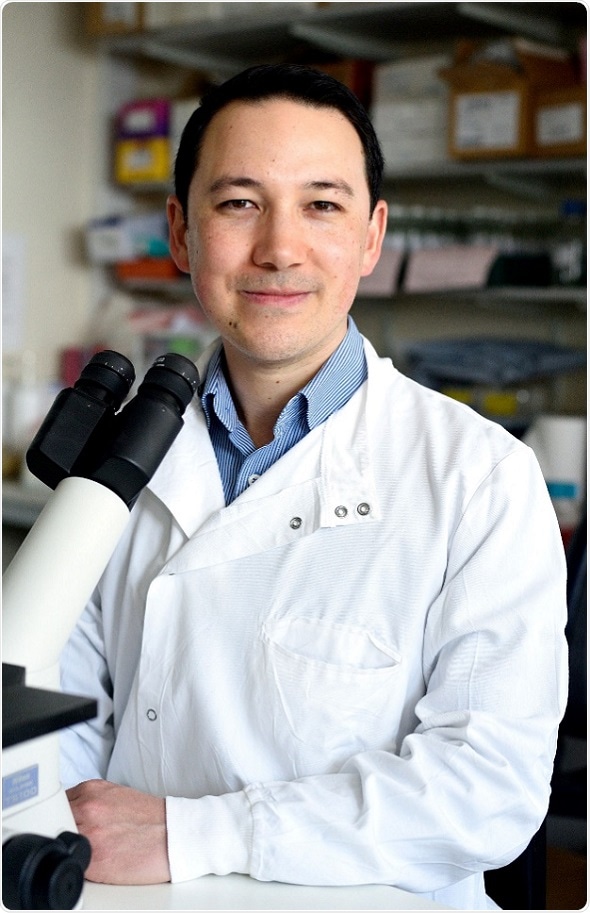A Fight for Sight funded researcher from the University of Bristol has used gene editing techniques to successfully demonstrate a gene therapy for glaucoma in the lab, in results published in Molecular Therapy in March.

Dr. Colin Chu
Glaucoma is the second leading cause of blindness for which there is currently no cure.
In a lab setting, the researcher used a gene-editing technique called CRISPR to alter genetic information when transferred into eye cells using a harmless virus.
By switching off a gene called aquaporin 1, researchers found that the gene therapy prevented the build-up of fluid – and therefore the increase in eye pressure that results in damage to the optic nerve in glaucoma. Aquaporin 1 is known to be associated with the production of eye fluid in glaucoma but until now there has been no therapy acting on this gene to treat glaucoma.
The findings are incredibly promising and researchers hope the potential treatment can be taken to a clinical trial in the next few years. If taken forward a new gene therapy could be available in the next decade.
Dr. Colin Chu, who is leading the research at University of Bristol said:
We hope that this research could form a new treatment approach for glaucoma. With current treatments, patients who use eyedrops can experience side effects, have to use them every day and they don’t always work sufficiently. There’s also glaucoma surgery, but there are risks, extensive follow-up is needed and it can fail over time.
The benefit of this new treatment is that with one simple injection we could potentially reduce someone’s eye pressure for a long time. In theory because it permanently edits the genetic code, a single treatment might be all you need.”
Head of Research at Fight for Sight Dr. Rubina Ahmed said:
The findings of this research are incredibly promising for patients, particularly those who do not experience a reduction in eye pressure despite the current treatment. Dr. Chu’s work represents a significant breakthrough for eye research and shows the importance of science to find new treatments for the prevailing causes of sight loss.”
Glaucoma is often linked to high eye pressure. Our eyes contain fluid, which helps them hold their shape and supply cells with nutrients. When this fluid no longer drains away fast enough, eye pressure can rise. Scientists know that the aquaporin-1 gene is key to the process of producing this fluid. Gene therapies work by using a harmless virus to act as a ‘package’, that can alter the genetic information of cells so that they start to work properly or in a beneficial way.
In this study, Dr. Chu demonstrated a gene therapy approach that reduces eye pressure by disrupting fluid production in the ciliary body following a single injection into the center of the eye. Specific gene editing is achieved using CRISPR technology, which is now capable of being delivered within a single virus (AAV). The AAV vector is now the gold standard and US Food and Drug Administration (FDA) licensed for ocular gene therapy. When tested in mice with induced glaucoma in the lab, this approach has shown to reduce the eye pressure without adverse effect.
Researchers have also been using donated eye tissues in the study to test the virus and the approach on human tissue, this means they can optimize everything in advance, reducing the time it takes to prepare the research for clinical trial. To progress to the next stage, Dr Chu and his team are now working to refine some of the technology in further lab work.
Dr. Colin Chu is a uveitis specialist. He is a Fight for Sight Fulbright scholar currently in the US at the National Institutes of Health. There he is researching new ways of analyzing immune responses in the eye that might benefit the study of multiple types of disease and treatments such as viral gene therapy.